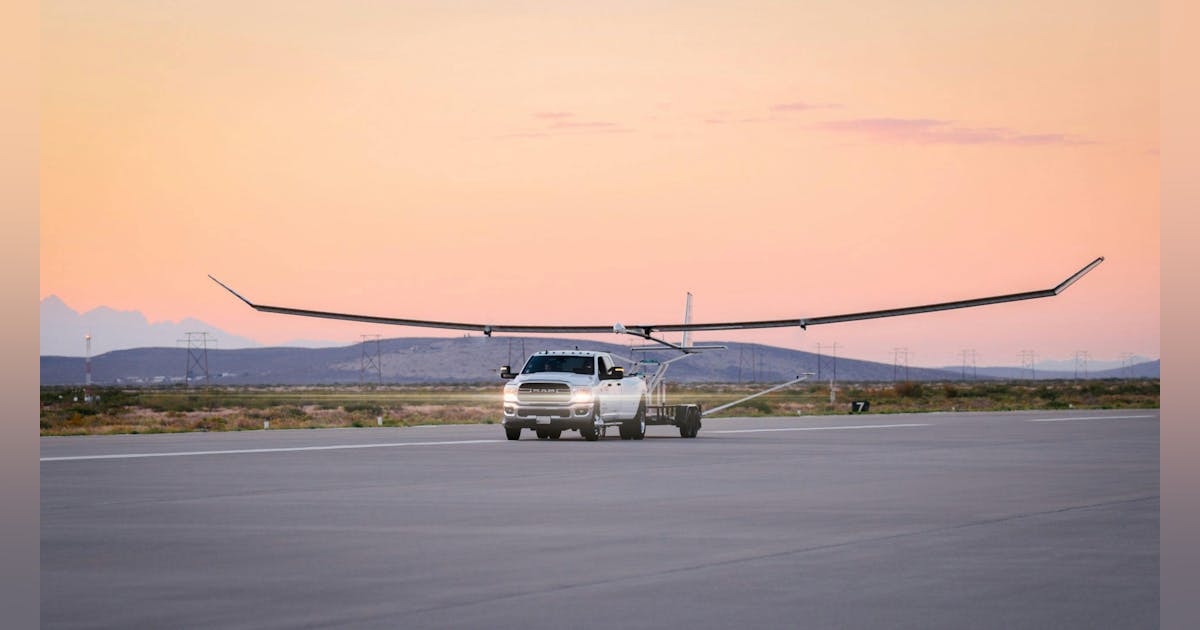Swift Engineering Wins NASA Contract to Enhance High-Altitude Drones
In July 2025, Swift Engineering caught the eye of the industry when it received a $1.2 million Phase II Small Business Innovation Research (SBIR) contract from NASA. This funding aims to advance the Swift Ultra Long Endurance (SULE) high-altitude drone platform. This award marks a significant step for High-Altitude Platform Systems (HAPS), highlighting how collaborations between small businesses and government bodies are transforming earth observation and climate science.
The SULE Platform: Cutting-Edge Engineering for the Stratosphere
The SULE drone by Swift is a groundbreaking platform, engineered to operate in the stratosphere. It can endure missions lasting up to 30 days at altitudes exceeding 55,000 feet. This solar-electric drone features an impressive 72-foot wingspan and carries a 15-pound modular payload, making it versatile for tasks ranging from scientific research to defense. Its modular design ensures rapid deployment and the quick swapping of instruments, offering unique opportunities for consistent aerial data collection.
Key Technical Features
- Endurance: Capable of 30 consecutive days of flight, surpassing most traditional UAVs.
- Altitude: Achieved a record of 55,904 feet during a recent 24-hour test flight.
- Propulsion & Power: Solar-electric, allowing for uninterrupted flight and minimal logistic needs for refueling or recharging.
- Payload: Supports 15 lbs, ideal for scientific, imaging, communication, or monitoring objectives.
- Design: Modular and scalable, facilitating swift technology integration and mission alterations.
The Importance of High-Altitude Drones
High-altitude drones like the SULE have the potential to revolutionize earth observation by providing continuous coverage of large areas. This capability supports climate monitoring, disaster management, and bridges the gap between short-range drones and expensive satellite systems.
Applications
- Climate and Ecological Monitoring: Offers real-time, high-resolution data crucial for climate studies and modeling.
- Emergency Management: Enables rapid evaluation and communication during and after natural calamities.
- Defense and Security: Provides consistent intelligence, surveillance, and reconnaissance over expansive areas.
- Telecommunications: Can function as temporary or semi-permanent communication relays in remote or disaster-affected areas.
HAPS drones are emerging as a cost-effective, adaptable alternative to satellites, providing on-demand launches, reduced costs, and easier updates. NASA’s interest underscores the pivotal role these aerial platforms will play in the future of atmospheric and climate science.
The NASA SBIR Program: Empowering Innovation
The NASA SBIR initiative aims to spark technological breakthroughs by offering support to small businesses. Through competitive grants, it promotes the development of technologies aligned with NASA’s objectives. For Swift Engineering, this partnership has been crucial. Previous Phase I funding facilitated early-stage demonstrations of SULE, and the Phase II award now supports comprehensive flight testing, technology advancement, and new instrument integration.
The resources and support of the NASA SBIR program are vital to driving technology innovations that are critical in addressing multiple challenges and opportunities.
Recent Achievements and Flight Milestones
The SULE drone recently accomplished a notable 24-hour test flight, achieving a height of 55,904 feet—remarkable for any uncrewed aerial system. These missions verified the airframe, solar propulsion, and electronics, proving SULE is close to its ambitious 30-day operational goal. Such ultra-long endurance flights enable the drone to surveil vast areas uninterrupted for weeks, proving invaluable for high-priority missions.
The Competitive Advantage of SULE
While other high-altitude drones and balloons exist, SULE stands out due to its:
- Combination of long endurance with rapid deployment, unlike high-altitude balloons which require prolonged preparation.
- Scalable, modular payloads designed for quick-turn missions and frequent technological updates.
- Cost-efficient operations compared to satellites, with frequent, responsive launches.
- Diverse commercial and defense applications, ensuring sustained market relevance.
Swift’s expertise in developing both hardware and payload systems, including water monitoring solutions and military expendable drones, elevates its standing as an agile and inventive supplier for both government and commercial clients.
Real-World Impact
Persistent high-altitude drones can transform operations across numerous fields:
- Climate Research: Drones can circle polar regions for extended periods, collecting atmospheric and sea ice data with adaptable payloads, offering real-time data to research centers and filling gaps not covered by satellites.
- Disaster Management: Following major events like hurricanes, SULE could enable continuous communication support for emergency responders and real-time mapping of evolving flood zones.
- Telecom Services: A network of SULE drones could provide temporary broadband to locations like festivals, disaster areas, or isolated communities, bypassing traditional infrastructure requirements.
Overcoming Challenges and Seizing Opportunities
While the promise of ultra-long-endurance HAPS is immense, challenges remain:
- Ensuring system reliability over prolonged periods in extreme stratospheric conditions.
- Safe integration into national and international airspace, balancing innovation with regulatory requirements.
- Maintaining efficient power systems and managing energy storage, especially during nights and cloudy spells.
- Securing robust communication links across vast distances.
The NASA SBIR Phase II funding is dedicated to overcoming these challenges by validating the SULE airframe, ensuring avionics durability, and integrating diverse instruments and payloads for operational missions.
Strategic Importance for NASA and Beyond
NASA’s involvement in efforts like SULE is not purely technical; it’s also strategic. High-altitude platforms form a critical component of next-generation earth science, planetary support missions, and national infrastructure resilience. The ability to deploy high-efficiency, cost-effective aerial systems rapidly strengthens the readiness and adaptability of both public and private entities. By fostering innovation within small businesses, NASA aids the U.S. in maintaining a competitive edge in atmospheric research while opening commercial avenues in agriculture, mineral surveying, wildfire detection, and smart city frameworks.
About Swift Engineering
Swift Engineering is a recognized innovator in unmanned aviation and advanced engineering, with expertise covering drones, water sensors, integrated IoT solutions, and heavy-lift UAS platforms. Their team consists of aerospace veterans, system engineers, and software developers who share a commitment to innovation—whether crafting the next modular scientific platform or delivering critical solutions swiftly. This approach has fostered repeated SBIR and NASA collaborations, delivering tangible impacts across real-world applications.
Looking Ahead: What’s Next?
With the new NASA SBIR Phase II award, the coming year will see SULE’s transition from prototype to operational demonstration. Key objectives will include extended flight tests targeting a full 30-day duration, expanded payload evaluations, and increased readiness for customer deployments. These preparations will support NASA’s own missions and an expanding list of commercial and academic contracts.
Engagement and Updates
For researchers, startups, and users interested in using or customizing HAPS drones, Swift Engineering’s efforts pave the way for wide accessibility to persistent atmospheric platforms. As these technologies mature, they offer incredible opportunities for innovation, cooperation, and significant global impact.
In conclusion: Swift Engineering’s SULE high-altitude drone is more than a significant advance for one company; it reflects a larger movement toward flexible, sustainable, and consistent aerial observation. With NASA’s backing, high-altitude platforms are poised to become as integral to earth science and communication as satellites and traditional aircraft.













